
22 minute read
FEATURE
The tween years are a time of excruciating awkwardness, hormonally driven exploration, and newfound independence. But the uncomfortable bodily changes and door slamming is also cause for celebration. So pop in your retainer; we have inspiring stories and humble advice from former middle-schoolers who’ve made it through the turbulent tweens.
CH-CH-CHCHANGES
Perla Jasmin Luna celebrates her quinceañera at St. Theresa’s Catholic Church in Federal Way.
IS A RITE OF PASSAGE RIGHT FOR YOU?
Coming-of-age ceremonies are celebrated in cultures throughout Seattle. How do you say goodbye to childhood?
As our sweet little babies morph into surly teenagers before
our eyes, how do we know when they are ready to take on real adult privileges and responsibilities? The first time they clean their room without being asked? The moment they sprout armpit hair?
In cultures around the world, communities designate a certain age as the right time to come together and teach children the skills and values they’ll need to survive the transition into adulthood. For many, this takes the form of a traditional rite-of-passage celebration.
We caught up with three local families who recently marked their child’s journey into adulthood with a cultural event — a Latino quinceañera, a Jewish bat mitzvah, and a Hindu bartaman — on how they made the most of the moment. CONTINUED ON NEXT PAGE >
<< Quinceañera
Perla Jasmin Luna was nervous, but smiling on the day her quinceañera finally arrived. “We’ve been preparing for a year, but since I was a little girl I always knew I wanted this,” says Perla, 15.
Her exhilaration was contagious; The congregation at St. Theresa’s Catholic Church in Federal Way buzzed with excitement, eagerly awaiting her entrance.
A traditional quinceañera starts with a religious ceremony followed by a lavish party — often as grand as a wedding. Family members, close family friends, and sometimes church community members often serve as padrinos and madrinas, sponsoring special items and gifts for the event including the venue, cake or flowers. A quince court of young damas (maids of honor) and chambelanes (the equivalent of groomsmen), sit in the front pews in a show of support. Many quince girls will give a doll to a younger girl at the party, symbolizing the passing of childhood.
Perla studied for months at St. Theresa’s under the tutelage of Hispanic Ministry Coordinator Alma Carrillo, who oversees spiritual preparations for girls approaching their quinceañera. Carrillo says the family, sponsors and quince court went on an eight-hour training retreat with the aim of strengthening the quince girl’s ties to her faith, building confidence, and reaffirming her dedication to her education and religious service.
Donning a glamourous, green, floor-length gown, custom-ordered from a quinceañera expo in Pasco, Perla shook out her last nerves before walking through the church doors, taking her first proud step on her journey into adulthood.
Bartaman
Last summer, Varun Khanal, 12, traveled with his family from his home in northeast Seattle to Kathmandu, Nepal, for his bartaman ceremony. In the Hindu tradition, the bartaman marks a boy’s passage into manhood and assumption of moral and social responsibilities.
“It’s like the person who does the bartaman is sort of coming of age — and then going into the big world,” explains Varun.
Though looking forward to the trip, Varun really didn’t want to have his head shaved. In the ceremony, shaving off the hair symbolizes renouncing the material world in order to embrace spiritual purity.
After his head was shaved, he was dressed in saffron fabric and his head was wrapped with a cloth full of porcupine needles, representing the natural tools often used by hermits. He then held a sack open to beg for rice and other food from his relatives in attendance. As his father, Bhushan, explains, “Varun was asking for rice because he’d now become the priest. It’s the journey of maturity.”
A few days later, he celebrated his initiation into adulthood with a big party, surrounded by family and friends.
Bat mitzvah
Sadie Suskind is fairly used to

Practice made perfect for Sadie Suskind at her bat mitzvah.

Varun Khanal went all the way to Nepal for his Bartaman ceremony.
attention. As a veteran contestant of the Fox show “MasterChef Junior,” the View Ridge 13-year-old has had her share of the spotlight. But becoming bat mitzvahed was a next-level commitment.
To become bat mitzvahed (for boys, it’s called bar mitzvah) at Temple Beth Am, a reform synagogue in north Seattle, one must prepare with an ancient Hebrew language tutor and attend twice-weekly religious school classes for several years.
“I worked on my Hebrew a lot. And it was a massive part of my daily life,” says Sadie. “I can’t stress enough how much I practiced!”
On her bat mitzvah day, Sadie wore a formal dress and a special tallis, the traditional Jewish prayer shawl.
“My tallis was passed down to me from my grandfather’s grandfather,” she explained.
At the service, she recited prayers in Hebrew and publicly
CONNECTING WITH TWEENS
Tips from a pediatrician and (imperfect) mom on how to guide our kids through adolescence
by SARAH BERGMAN LEWIS
For the past 20 years, first as a middle school teacher and
now as a pediatrician, I’ve witnessed the intense and confusing shuffle toward adolescence in all its variations.
Walking in and seeing a 15-year-old boy slumped on the edge of the exam table, disappointed that there hadn’t been upward acceleration since our last visit with the same concern: “discuss height.”
Listening to a 13-year-old girl confide in me that despite answering to the contrary with her parent in the room; she had in fact already gotten her period, but just didn’t want her mom to know about it yet.
Talking to a patient about how we can stop his periods, a painful trigger for his gender dysphoria. He was as desperate to start on testosterone therapy as his mom was desperate to “not do anything we’ll regret.”
The physical changes tweens and teens experience are symbolic of the shifting emotional landscape that goes far deeper than acne and sprouting body hair. Parents and kids are seeking their bearings; it is often intense, and always dynamic.
With my older daughter, Anya, on the precipice of tweenhood, it’s becoming apparent that, as with all previous stages I have experienced from the parenting seat, the “answers” will be more muddy than clear. Damn. delivered her d’var torah, the essay each b’not mitzvah student writes to explore the themes and meaning of her assigned torah portion.
That evening, she had a big party. Her family lifted her up on a chair and bounced her in the air, dancing the hora, a traditional Jewish folk dance, surrounded by community and love.
What’s your right rite of passage?
If you don’t participate in a culture that has a coming-of-age ceremonial tradition, your family can create your own tradition for marking the journey into adulthood. What lessons do you really want your child to learn? Which life skills do you think are most important to their success in your community? Decide which adults in your child’s life (relatives, friends, coaches, teachers, etc.) you’d like to include in the event, then devise challenges for your child to prepare for and overcome through the guidance of your trusted community.
Any coming-of-age ceremony is an opportunity for our young people to emerge empowered to take on more adult responsibilities while strengthening connections to the important role models in their life. And, of course, a great excuse for a party.
Still, with as much humility as I have knowledge, I will attempt to give some advice. Because this is what I know: our kids need our guidance now more than ever.
Here are a few ideas on how to survive the door slams and eye rolls and show up for our tweens and teens:
Seek first to understand. I recently asked a 13-year-old patient in foster care, “If you had a magic wand, what would you most want to change about your life?” — “My hair,” he answered. I chuckled
FIND THE RIGHT FIT

A heartfelt letter to inbetweeners from a former middle-school misfit
by JEKEVA PHILLIPS I wish this could be one of those stories about the secrets of middle school, but that is like asking for a decoder ring to adolescence. The truth is, middle school is a foray into the unknown. Emotions you didn’t even know you had will in fect you in profound ways, you are going to have a lot of questions and few answers, you may not fall in love or find the best friends of your life, but you will change your personality every five minutes. That doesn’t mean that you are not going to have a good time figuring it all out, though. When my little sixth-grade self walked the halls of Explorer Middle School for the first time, I realized unequivocally that I was a loner. The party girl, she was cool — people asked the party girl out, boys fell for her, girls wanted to be like her. The nerd, though a creature of reproach, at least had clubs to join. But being a loner meant, well, being alone. No one noticed me, no one invited me to hang out after class, or cared that I had to get glasses, no one rushed over to me to be their lab partner, or passed me notes. I might as well not have existed. I didn’t want to leave middle school being a nobody, so I set out to change my loner status. I was everything from party girl to bad girl to class clown to crystal- and sage-waving wicca girl. I cast spells on boys that I liked so they would fall madly in love with me, tried out for select soccer (my jock phase), changed my handwriting to match the popular style, learned origami so I could fold the notes I passed in class “the cool way,” bought the right shoes, listened to punk and rap and country and metal; and before I even realized it, I found myself without a tribe. I was an island, alone in a social purgatory. I finished my middleschool journey right where I began: a loner. Needless to say, I was devastated. I tried so hard to belong and came up short. I was terrified that going to high school was going to be more of the same. I fell into a slump that summer and spent most of my days inside watching Buffy the Vampire Slayer. The episode that I felt most akin to was “Out of Sight, Out of Mind” in which this girl was ignored so profusely by her teachers and classmates that she liter ally disappeared, right in the classroom! September was looming in the distance, and yet again I was determined to be some body. I combed the Alderwood Mall looking for the right look, but I had tried them all already. Then one afternoon, my mom took me to go shopping for knickknacks. We spent the whole day in dusty thrift stores, the last of which was a Value Village in Everett. I was tired of looking at ceramic kittens and clowns and found myself mindlessly picking through the outdoor wear. I came across this leather jacket: it was frayed on the inside, but was not well lived in. I was intrigued; some thing about it really spoke to me. I slipped it on and it fit quite nicely, despite the troublesome zipper. It fit better than nice, it fit right, felt right. For the first time in my life, I found some thing that felt like me. I wore it almost every day, decorated it with patches of punk bands that I discovered in the backs of record stores in high school. Stuck enamel pins of witty literary sayings that I learned about in college. I scuffed it up at parties and concerts in my twenties. I have it still. It carefully fits the bend in my elbows and hugs my shoulders like a close friend. I’ve removed most of the pins and patches now; I don’t need the labels. But every time I wear it, I feel all the things that I am — somewhat punk, a little bit of a nerd, a theatre geek, a movie buff, a rebel, a party queen, a poet, a writer, a feminist, a comic book freak. Does the jacket define who I am? No, but it reminds me that each one of us is a menagerie. It takes a while to come up with a complete collection, to figure out just who you are. That can be pretty lonely, especially when it seems like all of the other people around you have it figured out (or seemingly so). The only thing I can say to make your middle-school experience better is this: try everything. Be a jock for a day, or a punk for a week. Be an artist. Try photography. You may end up in the same place you started, but take comfort in knowing that eventually the right thing will come your way. You’ll find something that fits. Jakeva Phillips’ leather jacket is still a perfect fit.

NORTHWEST FOLKLIFE AND SEATTLE CENTER PRESENT
6TH ANNUAL
SEATTLE CHILDREN’S FESTIVAL
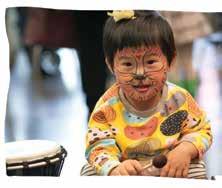
SEPTEMBER 21 & 22 10AM - 4PM
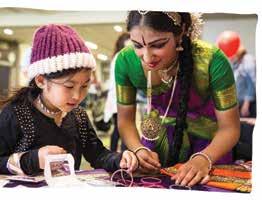
SEATTLE CENTER ARMORY & FISHER PAVILION FOR AGES 3-12, FUN FOR THE WHOLE FAMILY!
M U L T I C U L T U R A L F E S T I V A L O F M U S I C , D A N C E , A N D A R T S !
A P A R T O F
ACCESS FOR ALL! SUGGESTED DONATION: $10
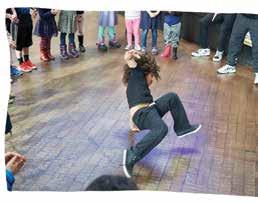
PLAY, SING, DANCE, DISCOVER SPARK YOUR CURIOSITY!
FOR MORE INFORMATION PLEASE VISIT, WWW.NWFOLKLIFE.ORG/OBN
SCREEN-TIME STRATEGIES
How to help your preteen manage time spent on their electronic devices
by EMILY CHERKIN, THE SCREENTIME CONSULTANT, LLC
Do you have a newly minted middle-schooler in the house? Despite middle school’s bad rap, it can be a time of exciting growth and change for families. I loved the 12 years I spent teaching seventh graders. It made me realize that most things remain true about this age group: kids want to fit in, appearance seems to matter, and hormonal changes complicate all of it.
But there is one big difference for today’s middle-schoolers: smartphones.
Thirty years ago, the fastest way to spread a rumor was to rush home after school and call ONE friend on the phone. Today, photos are instantly (Insta)’grammed, embarrassing moments are posted in real time, and all social plans occurs via social media, group chat, or text. It can feel daunting as a parent (and as a middle-schooler).
However, there are a few things you can do to help your preteen prepare for middle school in screen-saturated 2019: If your child is not getting a phone for middle school, know that you are NOT alone, and the tide is turning. The front offices *still* have landlines for student use, and they don’t require a Wi-Fi connection. (Alternatively, a “dumb” phone serves a purpose with fewer distractions.) Even if your child does not have a device, “secondhand distraction” is real. Even just a phone *near* them can detract from the learning experience. Talk as a family about how to handle this. Ask the school what their personal device policy is. Some schools have them; many do not. Request that they consider one. It is better for kids. Be aware of how much middle schools require kids to be online. This is a slippery slope: kids may need a screen to do homework, but they will be easily distracted by other apps and websites. Request paper versions of homework when you can: it is better for learning. Establish a quiet homework station in the house. Make it screen-free, if you can. If a computer is needed, keep personal devices away and turn off any notifications or alerts to minimize distractions. Prioritizing sleep is probably the number one thing you can do to positively impact your child’s overall well-being during middle school. Phones should charge in a common family charging area and be off and away for the night — for adults too!
< Connecting with tweens CONTINUED FROM PAGE 19
until I saw his stricken face. The most critical step for aligning with our kids is to understand their perspective. We don’t have to agree, but listening to their dreams and struggles without judgment can create genuine intimacy. Rarely do our children need a quick fix when swimming through the social calculations of worthiness. Instead of prescriptive advice, try, “tell me more,” or “what was that like for you?” and if you’re lucky enough to be trusted with their deepest insecurities and fears, “I hear you.”
Spend time together. If your relationship is primarily based on your child asking for a ride or money and you telling them what to do, it’s not going to feel good to either of you. Figure out how you like to spend time together and make it happen regularly. It doesn’t need to be an expensive date, but maybe a TV show you binge-watch together.
Provide solid information.
I talk a lot in clinic about critical thinking and “checking your sources.” This is crucial when it comes to puberty and body concerns. Unfortunately, the innate goals of adolescence may prevent them from seeing you as a credible source. Facilitate time for your child with someone they look up to and trust, like an older cousin. Check out library books and casually leave them around. Many kids have more trouble with face-toface conversations, so the car or bedtime is an ideal place to have visits.
Know your child. Focus on your child’s passions rather than their achievements. Watching a tween can be a bit like watching a summer storm — they move fast. When a parent cites grades or athletic achievements as the greatest source of pride in their child, I often see deflation in my patient’s body language. In contrast, when a parent tells me, “They are an artist,
CONTINUED ON NEXT PAGE >
SEATTLEʼS PREMIER NANNY AGENCY “Your child deserves the best, and so do you”
CAREWORKSNW.COM
Known for our exceptional personal service, long-term support and unique approach to finding just the right fit for your family.
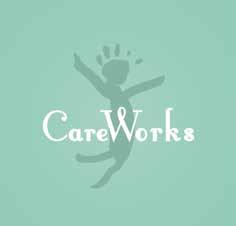








2 0 6 - 3 2 5 - 7 5 1 0
It ’s so much more than a gift Washington State Heirloom Birth Certificate
A portion of the proceeds from each birth certificate helps children grow, thrive and learn in safe and loving environments.


This official birth certificate is personally signed by the Governor and State Registrar.


Certificate is 8 1/2 x 11 and includes the name, date and place of birth, as well as the name and birthplace of the parent(s).




Framable keepsake




For each $40 purchase of an Heirloom Birth Certificate, $25 is tax deductible.
Challenging K-12 students in an intellectual community through early entrance, online, and outreach programs

Transition School • UW Academy Saturday Enrichment • Summer Programs Online Program • Professional Development

To find out more information on Children’s Trust and child abuse prevention in Washington State visit https://www.dcyf.wa.gov/about/ government-community/communityengagement or visit Department of Health to order your own Heirloom Birth Certificate.

•SWIM & RECREATION CLUB•


JOIN TODAY!
Programs from Preschool through Middle School • Before & Afterschool • Preschool • Swim Lessons • School Break and Summer Camps
TOP QUALITY FAMILY RECREATION & FITNESS SINCE 1958
2019-20 Puppet Theatre • Little Red Riding Hood • Celebrations of Light • Funny Woman • Brother Coyote and Sister Fox

4-SHOW SEASON TICKETS ONLY $33!

INDIVIDUAL TICKET: $11
In Three Locations | Free Parking
(206)524-3388 www.thistletheatre.org



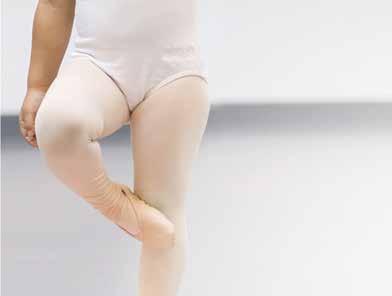
they are working to find their voice, they have a good heart,” the child beams. We all want to be seen for who we are and feel a sense of belonging. As parents, can we get curious about how this person before us is evolving and have less ego invested in the outcome? Easier said than done, I know, but it’s critical.
Take care of yourself. In order to be able to keep your sense of humor and take your child’s individuation less personally, you’re going to need some serious gas in your tank. Devote the time that you once spent on bedtime and changing diapers to give back to yourself. Exercise, restart therapy, visit the doctor, reconnect with a friend, or any other activity that feeds your soul.
Watch your media diet. Asking tweens to limit their own media use is like asking a gambling addict to play just one round — their neurodevelopment is not there. Help your child edit when and what they watch, and digest the input. If they’re on social media, introduce them to body-positive accounts. Let them earn more screen time by watching shows together and dissecting the messages as a family. Be brave enough to pull the plug for a media cleanse when needed. They won’t like it, but your kids need you to be the parent.
Focus on healthy habits. I see patients for eating disorders and obesity and everywhere in between. Whether a child needs to gain weight or take it off, I often say the same thing: it’s not about the food. This is not to say that what you eat doesn’t matter. Eating “real food” or “food that our ancestors would recognize as food” is the best medicine and impacts everything from mood to bones. However, when it comes to disordered eating, food is only the vehicle for struggles of control and love. Dive into the emotional issues beyond the food. Put the focus on practicing healthy habits rather than hitting a number on the scale. The same standards for healthy lifestyle should be in place for a heavier kid as for their beanpole sibling. Ask kids how they feel from the inside. Speak positively about your own body. Your kids are listening.
Start these conversations early. Parents often ask when is the right time to have “the talk” about sex and puberty. Instead of “the talk,” envision a series of conversations that will take place over years. The best way to raise a teenager with a healthy sense of self is to foster knowledge of their bodies and preferences from toddlerhood. And don’t worry that you need to get it right the first go-round — looping back later or making a necessary repair is a powerful way to model authentic living.
The best part of my job is watching families evolve. The single dad who brings his daughter to ensure she knows how to use a tampon and the family who proudly tells me that they stopped buying Capri Suns after our last visit inspire me. It may be uncomfortable, but the reward for parenting from a place of connection is high.
If it’s any consolation, as Anya hits double digits, I will be right there scratching my head alongside you.
Unlock more from our magazine at seattleschild.com
Get us delivered to your inbox!
Sign up for our eNewsletters
Find local resources for busy parents
Visit our family-friendly directory of busineses
Don’t miss an issue!
Subscribe and get Seattle’s Child mailed to your home
„ Find more nest-making ideas on seattleschild.com » MakingHome
Living large in small and unique spaces
Alex Lopiccolo and his son test out a home sensory space in Ballard.
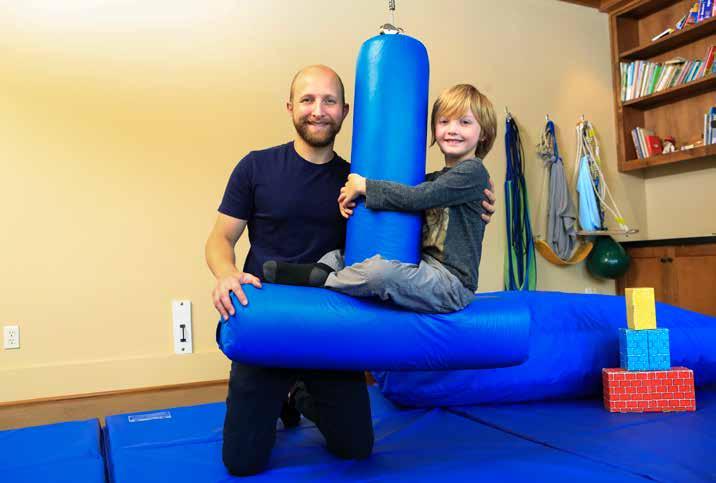
Meet the King of Swings
Alex Lopiccolo designs and builds home sensory gyms that help kids with therapeutic movement
by JIAYING GRYGIEL / photos by JOSHUA HUSTON
The other night, Alex Lopiccolo’s 4-year-old daughter just wasn’t
ready to sleep. After her bedtime story, she got into her swing with her two bunnies and swung for four minutes. That rhythmic, soothing motion did the trick. Within a minute of getting into bed, she was out.
Lopiccolo designs and builds home sensory gyms for kids who need therapeutic movement. His own house, naturally, has a huge gym setup. The kids both have swings in their rooms. Their solarium, dubbed the Sensorimotor Exploration Lab, is basically the world’s most amazing playroom, complete with a zipline, Lycra swings and lots of padded shapes for climbing and cushioned landings. “I live and breathe sensory therapy. So I have over 40 points of suspension in my house,” Lopiccolo says.
Lopiccolo owns Sensory Digest and also works part-time as an occupational therapy assistant at a pediatric clinic. He started CONTINUED ON NEXT PAGE >




